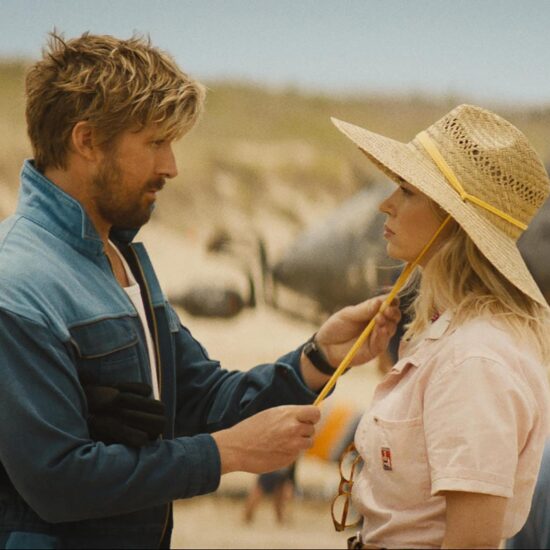
We meet many first time film directors here at Raindance Film Festival HQ.
Directing your first movie is always a fantastically challenging experience. The process of getting your first movie onto the big screen can end in tears if you fall foul of the producer or the budget and schedule.
A budget is a simple list of all the stuff and people you need and the amount of money required to pay for it. A schedule is a list of the dates and times you need the stuff. Both are incredibly tedious to produce, but without a budget and schedule, it’s very difficult to make your film.
Even with a no-budget film, you will still need a list of the stuff and people you need, and a schedule of when and where you need everything to show up.
Messing up the budget really impacts on the film.
Here is a handy list of items that cost money, and can easily spiral out of control if you aren’t careful. Most of these pitfalls are from lack of forward planning.
1. The Development Budget
When a film gets into production, the story rights need to be acquired and paid for. At this point, the producer controlling the script rights totals up all the money spent to date and presents an invoice so the production team can recoup the money they have paid, plus a profit.
Expenses include travel, accommodation and entertainment at places like Cannes Film Festival, location scouting, casting agents fees and that weird one: “Office Overhead.” Plus of course option fees paid the writer to date, insurance, banking and legal fees.
This can easily get out of hand, and when the final production budget is in the bank minus the development costs, directors can have a nasty surprise. Directors may have no alternative other than cutting pages out of the script.
I know two different writer/directors who found that over 10% of their production budget was gobbled up by extras added to the development budget.
Make sure you keep on top of the development budget.
2. The DoP
Choosing the right Director of Photography (or not) will really impact on your budget.
Some DoPs will literally take over the directing for you, blocking out the scenes in the rush to get the shots completed before wrap. This can lead to a war between the DoP and the director. Such conflict can ruin the morale on the set and make the shoot next to unbearable. But at least the film will get shot in this scenario.
Other DoPs are so eager to please they fall over backwards at each of the director’s whims without the benefit of courteous but professional criticism. The resulting shoot meanders and can quickly fall day after expensive day behind schedule. (see #10 below)
3. Location Location Location
Every time you move from one location to the next the cost rockets. Hence the typically low-to-no budget shoots in a single location movie like Paranormal Activity. If you desperately need a second location look out for the two-for-one, i.e. the front of a house can pose as one location and the rear garden as a completely different one.
4. Casting Agent
There are two factors here:
Firstly, a skilled casting agent can save you a fortune, which is good.
Secondly, too often directors fantasise about cast until it’s too late, and then hire a casting agent to get them out of jail to no avail. Money is flushed down the drain.
5. Let’s Fix It In Post
Every time I hear a director say, “We’ll fix that shot in post,” I cringe. I’ve worked on 68 features and over 700 commercials. Every time the director made that choice on a set, heads would roll a few days into post-production where the budget would start to rocket.
A director who thinks some sort of post-production miracle can save sloppy location shooting is lazy and ultimately a very expensive director.
6. Music
Including uncleared music in a movie is probably the single most costly mistake a filmmaker can make. Over the past 20 years I have had so many bad experiences with festival films. They’ve had to be pulled last minute because the filmmaker lied about whether the music was cleared or not. We even had one case where sales agents and distributors were nosing around a movie. Sadly it had an expensive song “The Girl from Ipanema” in it (uncleared). Needless to say that movie didn’t sell.
7. Catering
This is such a no-brainer you probably are wondering why it’s even on this list. Problem is, no one ever considers the cost of the chilli and beans Aunt Emma is going to cook. Nor the cost of cutlery and plates. Before long you have blown a good chunk of your budget. Now you have to decide whether or not your entire cast and crew can survive the next 3 weeks on nothing but white rice. Or do have to cut a special effects shot to save the catering budget?
By the way, I once spent eleven days on nothing but white rice and I can tell you – it was a thoroughly unpleasant experience.
8. Insurance
If I had a buck for every time we get late afternoon panic calls form filmmakers desperate for a magic insurance telephone number I could retire to the south of France.
No one ever thinks about insurance in time to budget for it properly. And you almost always need it at some point in the process.
9 Transport
I am sure your producer has allocated for car and van rental with the necessary fuel charges, taxes and tolls. But what of the petrol or taxi charges added to invoices of cast and crew? I had such a situation last week where I agreed to the fee but when the invoice arrived it included a whopper taxi bill. When queried, I was asked how else the equipment was going to get there. Recently I have discovered that we can also use discount vouchers to cut down the car rental cost. Many online portals such as VoucherBin offer a variety of voucher codes and rental car deals from Carrentals.Co.Uk, Argus Car Hire, Budget Rent A Car etc, that can become saviour for last minute business and movie trips. To say nothing about Uber, Lyft and the like.
10 Shooting Ratio
In the good old days of celluloid was all about the shooting ratio. Because film stock and processing was so expensive, producers, directors and DoPs kept an eagle eye on the ratio between consumed footage and the final film. Most indie films were shot on a ration between 5:1 and 10:1. Ie: 5:1 ratio means that 5 minutes worth of film stock was used to cover each minute of screen time.
In the digital age, image capture and storage is so cheap that some directors shoot over and over – as much as 100:1. Can you imagine the challenges of editing 100 hours of footage into a completed one hour film?
High shooting ratios aren’t clever, necessarily. But they sure are expensive.
Fade Out
Are you having trouble shooting on a budget? Would you like to learn how to get your script onto screen with a limited budget?
Why not come to the Lo To No Budget Filmmaking weekend class. I will show you how to take your screenplay and put value for money onto the screen with dozens of low-budget shooting tips. On the second day I will show you how to raise the cash, and how to use free PR to turn your movie into this year’s cult classic.
What are you waiting for? Lo To No Budget Filmmaking.
Hope this helps,














